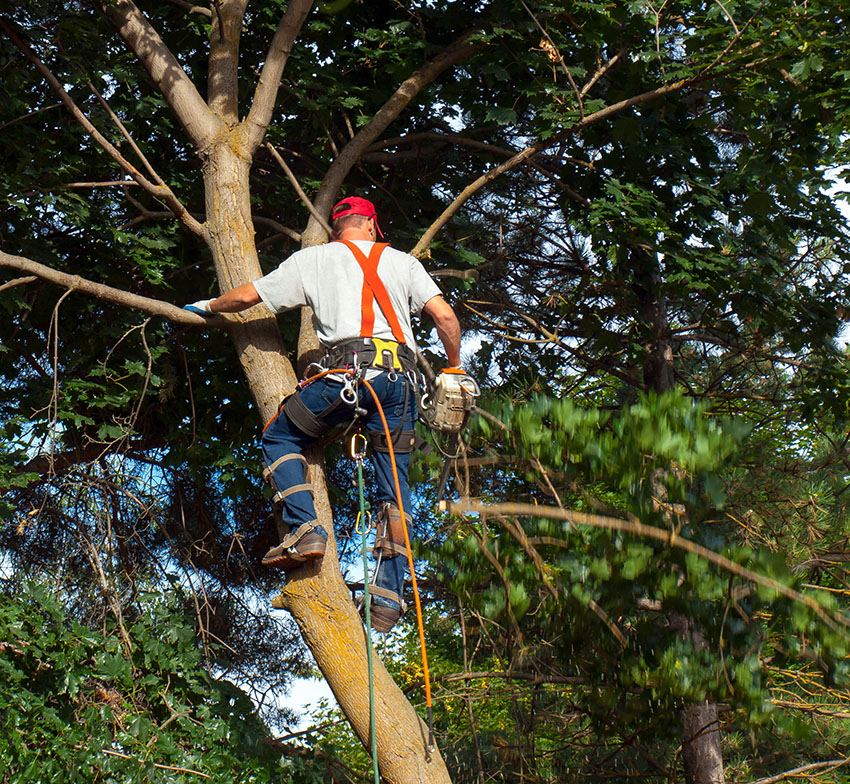Removing a mature tree from a residential yard or commercial property can feel overwhelming without proper guidance. Many property owners recognize that the task often exceeds simple trimming, turning instead into a full-scale project requiring professional tree removal services to ensure both safety and efficiency. Every removal begins with thorough preparation, assessing the site’s surroundings, and securing any needed permits. Overlooking these initial steps risks injury, property damage, and unexpected expenses. By consulting experienced arborists early on, landowners gain clarity on local regulations and create a tailored plan. This upfront investment in readiness lays the groundwork for a streamlined process that respects landscape health and delivers reliable results.
Assessing the Tree
Before lifting a chainsaw, it is vital to perform a careful inspection of the tree’s condition and location. Arborists look for signs of rot, pest infestations, or structural weaknesses such as large cracks in the trunk. They also note lean angle and canopy spread to predict potential fall paths. Seasonal factors like soil saturation or high winds further influence decision-making, highlighting areas prone to shifting. Conducting a detailed evaluation of these elements ensures that every cut aligns with site specifics and reduces the likelihood of surprises. A clear understanding of the tree’s health and environment empowers technicians to craft an effective removal strategy that safeguards both property and personnel.
Gathering Necessary Tools
Equipping a crew with the right gear forms the backbone of any successful tree removal. Essential items include chainsaws in various bar lengths for precision cutting and pole saws to reach elevated branches safely. Rigging hardware such as ropes, slings, and pulleys enables controlled lowering of heavy limbs to prevent surface damage. Protective gear—helmets, eye shields, cut-resistant gloves, and sturdy boots—guards against flying debris and unexpected falls. When dealing with larger trunks, wood chippers convert cut sections into mulch on site, simplifying removal. Investing in top quality equipment not only enhances efficiency but also lowers the risk of mechanical failure during critical phases of the operation.
Ensuring Safety and Planning
Safety considerations take center stage in every tree removal project. Crews establish exclusion zones by marking drop paths and clearing nearby obstacles like vehicles, playsets, or garden beds. Clear communication protocols—whether via radios or hand signals—keep everyone aligned during complex maneuvers. When branches overhang power lines, technicians coordinate with utility providers to eliminate electrical hazards before proceeding. Temporary fencing or warning tape deters passersby from wandering into danger zones. These essential precautions protect both the team and adjacent structures while fostering an atmosphere of attentiveness and professionalism throughout the job.
Cutting Branches and Crown Reduction
Reducing the tree’s canopy weight helps manage fall risk and streamlines the subsequent trunk removal. Starting at the outer canopy, specialists remove smaller branches first, gradually working toward larger limbs nearer the trunk. This technique avoids sudden shifts in balance and prevents uncontrolled swings. Ropes guide heavier sections down gently, sparing landscaping and hardscapes below. By advancing methodically from top to bottom, each segment detaches cleanly, enabling safer handling and disposal. Proper crown reduction not only eases the crew’s workload but also safeguards remaining vegetation from accidental damage during the descent of bulky branches.
Trunk Sectioning and Felling
With the crown dismantled, attention shifts to sectioning the trunk into manageable lengths that align with disposal regulations and handling capacity. Arborists employ a precise undercut and back-cut method to produce clean breaks without bark tearing. This careful strategy leverages ropes and harnesses to secure each segment before it separates, allowing a controlled lowering to the ground. Throughout this phase, the combined expertise of tree services Kensington professionals ensures that every cut maintains balance and anticipates potential rollouts. Dividing the trunk thoughtfully reduces strain on equipment and workers, paving the way for a safe, organized clear-out.
Handling the Stump
Once above-ground sections are cleared, the remaining stump demands attention to complete the removal. Options for stump removal include grinding the base into wood chips or extracting the entire root system with mechanical pullers. Grinding typically involves several passes to reach below the soil line, eradicating trip hazards and preparing the site for new plantings or paving. Full extraction requires digging around the stump, severing roots, and then leveraging heavy machinery to lift it out intact. The choice depends on the property owner’s future plans for the area and budget considerations. Proper stump treatment restores a level surface and eliminates the eyesore left behind.
Disposal and Recycling
After cutting and grinding, responsible disposal practices transform wood waste into valuable resources. Branches and trunk sections often become mulch delivered to gardens or community composting sites. Homeowners may also use larger logs as firewood or decorative landscape features. Separating treated or painted wood ensures compliance with local waste management rules and prevents environmental harm. By embracing a circular approach, property managers reduce landfill contributions while deriving practical benefits from materials that would otherwise be discarded. This environmentally conscious approach underscores the importance of stewardship in every phase of tree removal.
Hiring Professionals
While weekend warriors can tackle minor pruning, full tree removal calls for licensed arborists who bring both skill and insurance coverage. Certified technicians carry liability policies that protect clients in the rare event of accidents or property damage. Their extensive field experience, combined with adherence to industry best practices, ensures compliance with regulations and minimizes risk. Professionals also provide guidance on timing, such as avoiding nesting seasons or wet ground conditions. Outsourcing to reputable crews grants property owners peace of mind, freeing them to focus on other priorities while experts handle the heavy lifting. This level of expertise makes complex removals appear deceptively effortless.
Final Thoughts
Removing a tree from a yard or expansive property demands meticulous attention and reliable support from trained professionals. While small branches can sometimes be managed independently, larger or compromised trees often pose unpredictable dangers that only seasoned crews can navigate safely. In critical situations where a leaning or damaged tree threatens nearby structures or foot traffic, accessing round-the-clock emergency tree services Potomac becomes essential to protect lives and property. By combining thoughtful assessment, the right tools, and expert intervention, property owners can transform a daunting challenge into a seamless project, emerging with a clear, hazard-free landscape ready for future growth.


